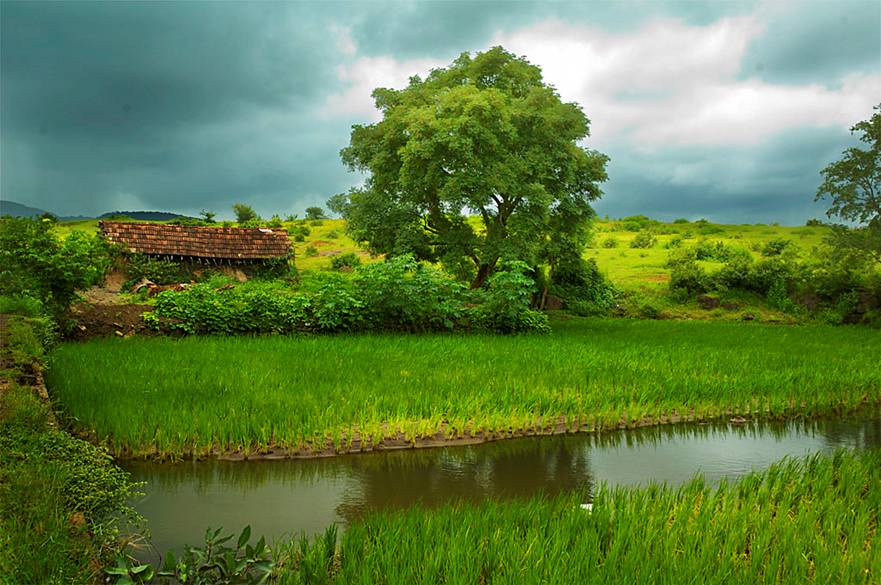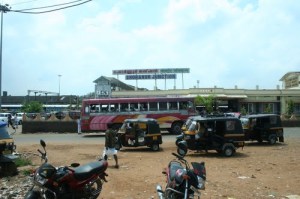Malabar Manual by William Logan published in 1887 could be considered as the first treatise on Malabar by a Modern scholar . Though the book is intended as a manual to help future British officials to navigate the administrative complexities of the region with ease , It’s importance as a historical record of the period cannot be contested. As the British took up the administration of the region in 1792 they were confronted by the task of rebuilding a region utterly devastated by the Mysorean invasion and the British offensive. They started from the basics like repairing the roads (built by Hyder Ali and Tipu Sultan), connecting the region to the railway grid and most importantly reverting the administrative machinery back to the indegeneous system of amsams and desams from the persianised system of the invaders.
Valluvanad as we know today is a British creation. It comprises of ;
1. The core regions of erstwhile state of Valluvanad which comprises of the present day taluks of Perinthalmanna and Mannarkkad.
2. The peripheral region of Nedunganad including parts of Ottapalam and Pattambi taluks which were ruled separately by the Samuthiri . Nedunganad was an independent state for many years before being annexed by Vellatiri. The region never really came under the sway of the new rulers and was mostly autonomous.
3. The chiefdom of Kavalappara with its Muppil Nair was semi independent. It comprised of the regions around Shoranur and the ruler often shifted his allegiance between Samuthiri and the King of Kochi.
Now let us see what the Malabar Manual says about the region;
The first major reference to the region comes with the list of navigable roads in the region. It talks about a road broad enough to carry guns running from Tanur through thirunavaya , Tritala , Kavalappara and Lakkidi to Palakkad mentioned by Captain Johnson in 1796. This must be the Palakkad – Ottapalam – Pattambi road which now serves as the main artery of the region.
The second road to be mentioned is quiet fascinating one which is rarely used these days. It starts from Feroke , passes Venkadakkotta (Kottakkal) then on to Angadipuram and Cherpulassery finally terminating at Mannarkkad. This actually validates the antiquity of the Perinthalmanna – Kottakkal route and Cherpulassery – Mannarkkad road. This road also had an extension to Lakkidi from Cherpulassery which must be the Cherpulassery – Ottapalam road.
In the section relating to the geography of the region Logan talks about the Kalladikode ranges and the intensity of rains in the region , of Ananganmala near Cherpulassery and most importantly of the Ponnani river. I had always found the names Bharatapuzha and Nila to be artificial constructs hence to see Logan call the river Ponnani seems to vindicate my hunch ( though Perar is my preferred nomenclature ). The river as it is today was seasonal but it’s tributaries like Thoothapuzha is said to be perrenial.Valluvanad is said to be hilly with abundant paddy fields in the valleys between them. Arakurussi amsam was the largest in the whole of Malabar district and the wildlife of Attapady is described in great detail.
The history of Valluvanad is superficially touched upon with the Samuthiri’s partitioning of the nadu and the placement of a zamorin branch at Karimpuzha. It is the Mysorean invasion and the aftermath that is discussed in detail( may be highlight the British superiority) . It details the atrocities committed by invading forces on the Nairs including forced conversions and temple desicrations. What interested me more was the sectarianism that was prevelant at the time especially after the British conquest till the 1880s. Initially the foreigners were the targets of the Mappila insurgents but it soon turned against the Nairs. Though much of the incidents took place in the Eranad taluk , Valluvanad proper (Perinthalmanna) was a battle field. Though most of these attacks were tenant uprisings some of them were pure religious fanaticism. For example in Kunhippa Musaliyar of Thoota mosque ( currently in Malappuram) in 1872 took offence of the Komaram of the Velichapad (who supposedly insulted Islam) of Thootha Kavu on the other side of the river. Musaliyar crossed the river at night with some of his friends and killed the Velichapad. Kolathur was notorious for communal violence , even Thirumandham Kunnu temple was desicrated in 1849. It is a heartening thing to note that religious harmony was restored over the last 150 years and no traces of animosity remains today.
The British taluk of Valluvanad was headquartered at Perinthalmanna with a sub registrar office and a Deputy Tehsildar office at Cherpulassery ( Kacherikunnu).But over time Cherpulassery lost its place to Ottapalam. The initial importance of Cherpulassery might be due to its importance as the erstwhile capital of Nedunganad. Cherpulassery is listed as an important town in the book while Ottapalam, Pattambi and Shoranur are mentioned merely as market places or railway stations which is quiet strange in the modern sense. Other important towns are Angadipuram, Perinthalmanna, Karimpuzha, Mannarkkad and Vaniyamkulam.
Vaniyamkulam chanta is described as the largest fare in the region conducted on Thursdays with over 5000 in attendance. Here it must be noted that even Angadipuram Chanda would have 1500 attendees.There were chandas at Mankada, Kulattur, Thiruvegapura , Cherpulassery , Pattambi , Pattiripala , Ottapalam , Mannarkkad , Sreekrishnapuram and Alanallur. Other important fact is the use of cheruvannur for Shoranur, this might might only have changed in the 1900s which makes shornur the youngest of the major towns in Valluvanad.
Among festivals Thirumandam kunnu puram was the largest by far with 8000 people attending. The second comes the Mannarkad pooram with 4500 attendees and the third is a tie between koonathara Aryankavu puram and pariyanampatta puram with 3000 attendees. Other purams with over 1000 participants are Mulayankavu pooram, Muthassiyar Kavu Thalapolly , Mundakkottukurissi Cherumulayankavu puram ( Kayiliad ), Mulanjoor Bharani Vela , Chinakkattur puram, Chettallur pooram ,Thoota pooram, Cherampatta pooram , Elumbulassery Nallisery pooram and Karimbuzha utsavam. Cherpulassery Ayyappan Kavu utsavam is said to have an attendance of 2000 but there is no mention of Puthanalkkal pooram.
During the British rule roads expanded with Palakkad – Ponnani road and Palakkad – Kozhikode road being the most important. There is mention of a roads originating from Pattambi railway station to Nilambur , Kuttanad , Cherpulassery and Thritala. Railway stations at Ottapalam, Lakkidi, Cheruvannur , Pattambi are mentioned.
Though the book talks more about Kozhikode and Kannur , the smaller bits here and there about Valluvanad is quiet helpful in building the history of the region especially of the 18th and 19th century. It is a sad fact that our local history is never studied with vigour or is taught to us , it is high time that regional histories be brought to the forefront or some of the local knowledge will be lost for ever.






